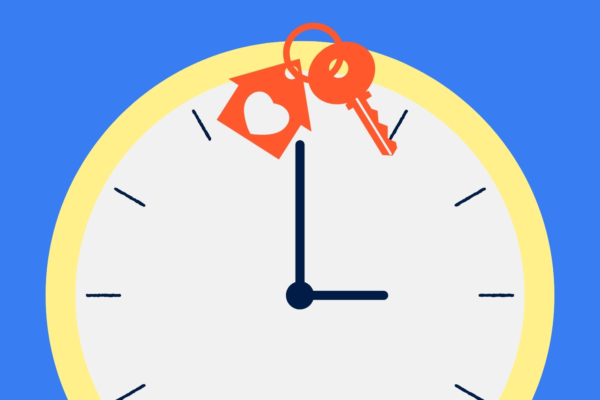
Preapproval vs Prequalification: What's the Difference?

When embarking on the journey of buying a home, understanding the differences between mortgage prequalification vs preapproval is crucial. Both terms are often used interchangeably, but they serve different purposes in the mortgage application process. Knowing when and why to obtain each can significantly impact your homebuying experience, particularly in a competitive market where having your finances in order can be the key to securing your dream home.
In this article, we’ll break down what mortgage prequalification and preapproval mean, how they differ, and why both are important steps in the mortgage application process.
What is mortgage prequalification?
Mortgage prequalification is the initial step in the home loan process. It involves providing a lender with basic financial information, such as your income, debts, and assets. Based on this information, the lender gives you an estimate of how much you might be able to borrow.
Get Prequalified Today
Ready to find your next mortgage? Begin your journey with Amplify!
How Mortgage Prequalification Works
The process of mortgage prequalification is typically straightforward and can often be done online or over the phone. You provide your financial information to the lender, and they assess your overall financial situation. This might include:
- Income: Your monthly or annual income.
- Debts: Existing debts such as student loans, credit card balances, and car payments.
- Assets: Savings, investments, and other assets.
- Credit History: A basic review of your creditworthiness, although a detailed credit check is not usually conducted at this stage.
After reviewing this information, the lender will provide an estimate of the loan amounts you may qualify for. However, it’s important to note that this is just an estimate and not a guarantee of a loan.
When to Get Prequalified
Prequalification is an excellent first step for those who are just beginning to think about buying a home. It gives you a ballpark idea of your price range, helping you understand how much home you might be able to afford. This can be particularly useful if you’re in the early stages of house hunting and want to get a sense of what homes are within your budget.
However, because prequalification is based on self-reported information and does not involve a thorough review of your credit report or financial documents, it is not as strong as preapproval when it comes to making offers on homes.
Once the lender has reviewed your documents and history, they will provide you with a prequalification letter. This letter outlines the loan amount you’re approved for, the interest rate, and the terms of the loan. This is not preapproval or an approval of your mortgage; your final approval depends on a successful appraisal of the property and other conditions.
What is mortgage preapproval?
Mortgage preapproval is a more rigorous process that involves a thorough examination of your financial situation. Getting preapproved for a mortgage means that a lender has reviewed your financial documents, conducted a detailed credit check, and is willing to offer you a specific loan amount under certain conditions.
How Mortgage Preapprovals Work
To get preapproved for a mortgage, you’ll need to provide the lender with various financial documents, including:
- Pay Stubs: Proof of your current income.
- Bank Statements: Lenders will review your savings and checking account balances.
- W-2s or 1099s: These documents show your earnings from the past two years.
- Tax Returns: If you’re self-employed or have other income aside from wages, pension, or social security, you may need to provide two years of tax returns.
Once the lender has reviewed your documents and conducted a credit check, they will provide you with a preapproval letter. This letter outlines the loan amount you’re approved for, the interest rate, and the terms of the loan. It’s essentially a conditional commitment from the lender, stating that they are willing to lend you a specific amount of money, pending a successful appraisal of the property and other conditions.
When to Get Preapproved or Prequalified
Getting a first look from a lender is particularly important when you’re serious about buying a home. In a competitive market, a preapproval or prequalification letter can give you a significant advantage over other potential buyers. Real estate agents and sellers often prefer to work with buyers who are prequalified because it shows that the buyer is financially capable of purchasing the home.
Having a letter in hand when you make an offer on a home signals to sellers that you are a serious buyer, which can make your offer more attractive compared to others who may not be as prepared to make a financial commitment.
Key Differences Between Prequalification and Preapproval
While both prequalification and preapproval are steps in the mortgage process, they differ significantly in terms of their depth and impact.
Level of Detail
- Prequalification: Involves a basic review of your financial situation based on self-reported information. It does not require documentation or a detailed credit check.
- Preapproval: Requires a thorough review of your financial documents and a credit check. The lender verifies your financial information to determine the exact loan amount you qualify for.
Accuracy and Reliability
- Prequalification: Provides an estimate of the loan amount you might qualify for, but it’s not guaranteed. Since it’s based on self-reported information, it can be less accurate if you are not thorough.
- Preapproval: Offers a specific loan amount and is more reliable because it’s based on verified financial information and a credit check.
Impact on Credit Score
- Prequalification: Usually does not involve a credit check, so it does not impact your credit score.
- Preapproval: Involves a hard inquiry on your credit report, which can have a small impact on your credit score.
Final Thoughts
Whether you’re getting prequalified or preapproved, it’s a crucial part of the homebuying process. By working with the lender to review your credit history, you can establish a budget and give yourself a competitive edge when putting in an offer on a house.
As you navigate the homebuying journey, it’s important to work closely with a mortgage lender who can guide you through the prequalification process. By doing so, you’ll be better prepared to secure financing and move forward with confidence in your home search. Ultimately, whether you’re just starting to think about buying a home or you’re ready to make an offer, taking the time to get prequalified can make all the difference in achieving your homeownership goals., but if you have any questions about the process, reaching out to a local lender is a great way to get the answers you need.
Looking for a local mortgage lender?
Learn more about Amplify’s mortgage products and apply today!

